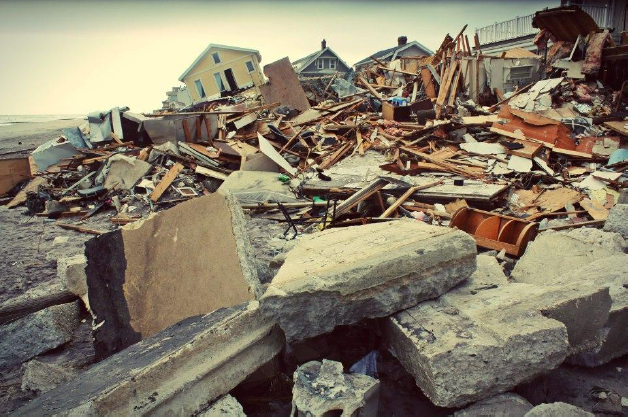For some time, I have been asserting that climate change, debt and official growth figures are linked. New reports on the macro and micro levels show that the increase in climate-change-generating emissions is the same as that of global growth. Added together, they equal the figure for the increase in global debt.
Emissions are the correlative of “growth.” But now we can see that they combine to generate debt in excess of both, requiring yet more “growth” to pay back the debt. Which causes more emissions, but never enough growth to recuperate the debt. The practical results are those the new Strike Debt report on Hurricane Sandy clearly shows: climate disaster makes profit for certain sectors by debt financing. Nothing is solved, everything gets worse.
Start with climate. A new report on CO2 emissions this year shows continuing bad news:
Data show that global CO2 emissions in 2012 hit 35.6bn tonnes, a 2.6% increase from 2011 and 58% above 1990 levels.
While this is a slight decline from 2011, emissions levels are running far ahead of any possible chance to restrict climate change to 2 degrees above pre-industrial levels–if you think this year was bad, remember we’re not even half way to 2 degrees yet.
Interestingly, global growth levels are exactly the same according to current reports:
Global GDP growth is now expected to expand by an estimated 2.6% in 2012, very close to the global recession threshold of 2.5% and well below the long-term average growth rate of 3.5%. However, the forecast for worldwide GDP in 2013 is 3.2% growth.
So the “growth” we have is in fact experienced, as we all know, as recession in all but name. It now precisely mirrors carbon emissions, demonstrating statistically what I and many others have been saying: you cannot grow your way out of this financial crisis because it still further destroys the biosphere. Yet I did not realize that growth and emissions were in such lock-step.
Here’s the kicker: debt levels are rising at the aggregate of growth plus carbon emissions, as the end of year statements are showing:
Overall global debt capital markets activity totaled US$4.2 trillion during the first nine months of 2012, a 4% increase from the comparable period in 2011. Bolstered by a resurgent corporate debt market, third quarter global debt activity totaled US$1.3 trillion.
Climate change plus growth thus equals debt: minus a percentage point for losses caused by climate disasters. So here’s how it works: climate disaster generates more borrowing, which produces weak “growth,” because the disasters also cause huge personal losses.
I’m aware that “adding” emissions figures to fiscal growth is not real mathematics. Nonetheless, the comparison is striking and the realization that debt is outpacing growth two to one, even as emissions accelerate, is the definition of a no-win situation. As long as the economy is thus predicated on generating debt, we will have low growth and high carbon emissions.
The “micro” example comes from New York City, where residents are learning the hard way that FEMA is just another loan agency. All people wanting FEMA support are required to apply for loans. A new report from Strike Debt called “Who Pays for Sandy?” highlights the difficulties behind the apparent “assistance” being offered:
[the] application is reported to be at least thirty pages long. Applicants are reporting that the forms are difficult to complete, because flooding destroyed much of the required paperwork.
Nor are the loans so great when you get them. Interest rates are determined by credit scores and the ceiling on loan amounts is not very high. Nonetheless FEMA loaned about $6 billion after Katrina, with expectations post-Sandy being for much greater amounts.
As Strike Debt puts it:
By only offering loans to already struggling homeowners, FEMA and the SBA shift the burden of disaster to individuals and send profit to the loan servicers.
In short, climate change disaster generates debt creating growth. But it’s the debt that will be the highest number and the longest legacy.
I

